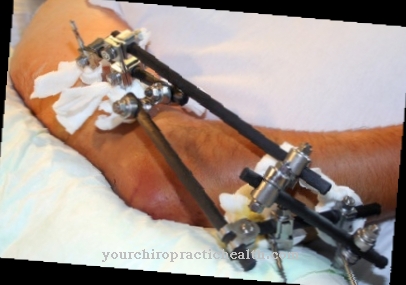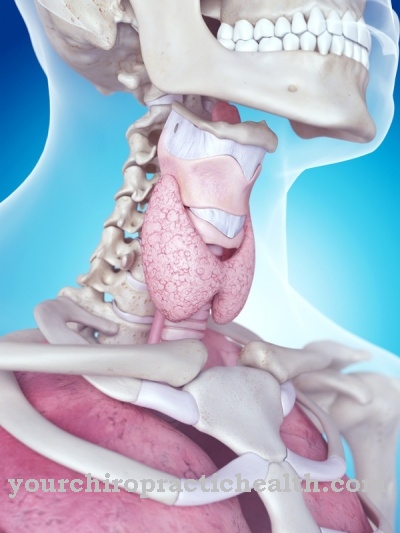In the field of Nuclear medicine Nuclear physical processes and radioactive substances, which are used in medicine in diagnostics, are included. This also includes the open radionuclides. Another chapter in nuclear medicine is radiation protection in connection with medical, biological and physical principles.
What is nuclear medicine?

It is an extensive medical field that is divided into several sub-areas. Radioactive substances are used in this area. These include radioisotopes, biological substances, radiopharmaceuticals and other substances.
There is also function and localization technology in this area. Furthermore, the open radionuclides fall into the field of nuclear medicine, which, like radioiodine therapy, are used in therapy. The area of responsibility is completed by radiation protection, which is defined by medical, biological and physical principles.
Within this area, additional knowledge such as pathogenesis, the symptomatology of diseases and the etiology is applied. In the context of nuclear medicine, the diagnostic planning of the treatment is carried out in connection with the dose calculation and radiation protection.
Function, effect & goals
The treatment with nuclear medicine is carried out by a radiation therapist. At the start of therapy, the therapist applies radiopharmaceuticals to the organ to be treated or the corresponding area of the body. The applied radiopharmaceuticals emit beta rays, although this form of radiation is not as stressful as gamma rays. In some cases, surfaces are painted that must not come into contact with water during the treatment.
One of the best-known treatments is radioiodine therapy, which is used for hyperthyroidism or thyroid cancer. The disease is treated orally using a capsule with the radioactively marked iodide isotope iodine-131. Due to the accumulation in the thyroid gland, malignant tissue can be released there due to radioactive radiation. In order to clarify the exact treatment, thyroid scintigraphy can be used beforehand.
Another area of application is the treatment of inflammatory processes, such as rheumatism in the knee or shoulder joints. In this case, a doctor injects the radioactive isotope yttrium-90 into the joints. Nuclear medicine is also used as a therapy for neuroendocrine tumors, also known as carcinoids. Doctors rely on the effects of the substances Lutetium-177 or Yttrium-90. Furthermore, non-Hodgkin lymphoma (NHL) is the focus of treatment with nuclear medicine. In this case radioimmunotherapy is used.
The basis of this treatment, in which Y-ibritumomab-tiuxetan is used, is an antibody therapy. Other areas of application also include myocardial scintigraphy, which is used to clarify heart attack scars or the blood flow to the heart muscle. This examination is usually carried out in the form of a combined stress and redistribution scintigraphy.
The exercise bike is predominantly used to generate the load. Nuclear medicine is also used for bone scintigraphy. The entire bone structure of humans is examined for bone tumors and carcinoma metastases. This procedure can also be used to find out if there is any inflammation in the joints or bones. It is also clarified whether symptoms arise from bone injuries or loosening of the joint prostheses.
Risks, side effects & dangers
There are usually few side effects when using these procedures. This applies to examination as well as therapeutic procedures in the context of nuclear medicine. If side effects occur, it may be local irritation. However, water retention or inflammation is also possible. However, side effects in cancer treatments cannot be completely ruled out.
Ultimately, this depends on the dose of radiation and the severity of the cancer. If only weakly radiating substances are used to treat the disease, the burden on the body will be low. The most important factor in this case is the half-life, which is largely very short. Only a few hours after the treatment, a large part of the radioactivity can already be broken down, which is promoted by drinking a lot.
A risk is also to be seen in the psychological factors that can arise due to the restricted daily planning.Other side effects that may occur during treatment are fatigue, headache and loss of appetite. In addition, the diagnosis of cancer is difficult to cope with. However, these are side effects that will subside as the treatment ends. The severity of the symptoms also depends on the size of the tumor or the treatment area. However, there can be long-term damage, which includes fatigue. It can happen that the resilience remains limited after the end of the irradiation. In this case, what is known as fatigue has likely developed.
There is a so-called exhaustion syndrome, which cannot be compared with normal fatigue. With targeted training, the body can be brought back to greater efficiency. Today it cannot be ruled out that among the patients to be treated there is a defibrillator or a pacemaker. The treating physicians have to help decide which form of treatment is possible for their patients. The individual situation of the patient must be taken into account in such treatment.

.jpg)























.jpg)

.jpg)
